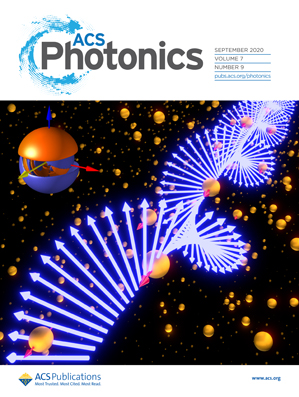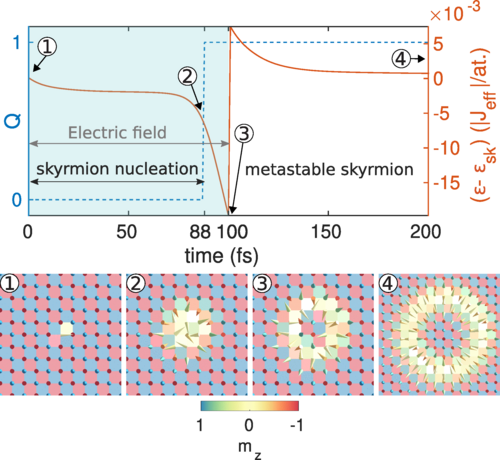Orbital Magnetism in Metallic Nanoparticles
Transfer of angular momentum from helicity-controlled laser fields to a nonmagnetic electronic system can lead to the creation of magnetization. The underlying mechanism in metallic nanoparticles has been studied using different theoretical approaches. However, an understanding of the dynamics using an orbital-based quantum-mechanical method within the many-body theoretical framework is still due.
To this end, the real-time formulation of time-dependent, density-functional theory is used to study induced orbital magnetism in metallic nanoparticles (clusters) excited by circularly polarized light. The nanoparticles are described by a spherical jellium model on a real-space grid. The polarized laser field gives rise to an angular momentum and, hence, a magnetic moment, which is maximum at the surface plasmon frequency of the nanoparticle, revealing that this is a resonant plasmonic effect. The primary contribution to the magnetic moment comes from surface currents generated by the plasmonic field, although some bulk contributions due to the quantum-mechanical nature of the system (Friedel oscillations) still persist.
We compare several nanoparticles of K, Na, and Au having the same size and excited at their respective plasmon frequencies and show that the generated magnetic moment per energy pumped into the system is maximum for K and minimum for Au. A similar trend is observed for nanoparticles of the same chemical species but different sizes.

Selected publications
Driving Orbital Magnetism in Metallic Nanoparticles through Circularly Polarized Light: A Real-Time TDDFT Study, ACS Photonics 2020, 7, 9, 2429–2439. https://pubs.acs.org/doi/10.1021/acsphotonics.0c00462
Spin current generation by ultrafast laser pulses in ferromagnetic nickel films, Phys. Rev. B 97, 014424 (2020). https://doi.org/10.1103/PhysRevB.97.014424
Ultrafast electric-field driven skyrmion nucleation
We explore the possibility to coherently nucleate and control skyrmions in an ultrathin metal film from a femtosecond pulse in electric field.
We show how a Dzyaloshinskii-Moriya interaction can be generated in an ultrathin metal film from a femtosecond pulse in electric field. This interaction does not require structural inversion-symmetry breaking, and its amplitude can be tuned depending on the amplitude of the field. We perform first-principles calculations to estimate the strength of the field-induced magnetoelectric coupling for ferromagnetic Fe, Co, and Ni, and antiferromagnetic Mn, as well as FePt and MnPt alloys. Last, using atomistic simulations, we demonstrate how an isolated antiferromagnetic skyrmion can be coherently nucleated from the collinear background by an ultrashort pulse in electric field on a hundred-femtosecond timescale.

Figure: AFM skyrmion creation under a pulse in electric field. The graph shows the time evolution of the topological charge (left, dotted line) and of the energy per atom (right, solid line). The blue shaded area indicates the duration of the electric-field pulse. The spin maps show snapshots of the magnetization around the center of the supercell at different times of the simulation.
Mechanism for ultrafast electric-field driven skyrmion nucleation. Phys. Rev. B 104, L060409 (2021). https://doi.org/10.1103/PhysRevB.104.L060409
